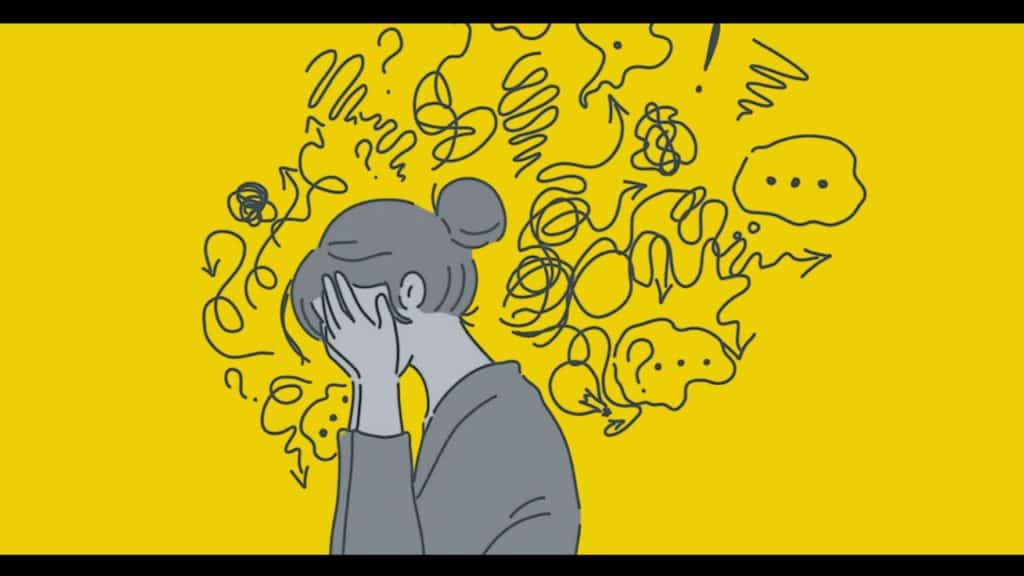Ever feel like your heart is racing over something that hasn’t even happened yet?
Anxiety affects millions of people worldwide, turning everyday situations into overwhelming challenges.
The good news? There are proven, practical techniques that can help you regain control and find calm in the midst of a storm.
These aren’t just temporary fixes; they’re tools you can use anywhere, at any time.
In this blog, I’ll share evidence-based methods that actually work, from quick relief strategies to long-term coping skills that can transform how you manage anxious moments.
Understanding Anxiety Response
Anxiety is your body’s natural alarm system designed to keep you safe.
Sometimes it goes off when there’s no real danger, causing racing thoughts, rapid heartbeat, sweating, or feeling overwhelmed.
Recognizing these signs early is crucial because the sooner you identify anxiety creeping in, the faster you can use techniques to manage it.
How to Calm Anxiety Fast? 3 Proven Methods
When anxiety strikes, you need tools that work within minutes. These three evidence-based methods can help calm your nervous system and bring you back to a centered state quickly.
The 4-7-8 Breathing Method
This simple technique helps activate your body’s relaxation response and can calm anxiety fast.
Inhale through your nose for 4 counts, hold your breath for 7 counts, then exhale through your mouth for 8 counts. Repeat this cycle 3 to 4 times.
The 4-7-8 breathing for anxiety works by slowing your heart rate and sending calming signals to your brain.
Grounding Techniques for Anxiety
The 5-4-3-2-1 method brings you back to the present moment by engaging your senses.
Notice 5 things you can see, 4 things you can touch, 3 things you can hear, 2 things you can smell, and 1 thing you can taste.
This technique interrupts anxious thoughts by grounding you in the present moment.
Progressive Muscle Release
Start with your toes and work up to your head. Tense each muscle group for 5 seconds, then release completely.
This helps eliminate physical tension that builds up with anxiety and creates a noticeable contrast between tension and relaxation.
Long-Term Anxiety Management Strategies

While quick techniques provide immediate relief, building lasting resilience requires strategies that address the root patterns of anxious thinking. These approaches help you develop stronger mental habits over time.
1. Cognitive Behavioral Techniques for Anxiety
CBT helps you identify and change negative thought patterns. When anxious thoughts arise, ask yourself if the thought is realistic, what you would tell a friend in this situation, and how likely the feared outcome actually is. Replace thoughts like “I can’t handle this” with “This is challenging, but I can manage it step by step.”
2. Building Your Personal Response Plan
Create a structured approach for different anxiety triggers:
| Situation | Physical Signs | Primary Technique | Follow-up Action |
|---|---|---|---|
| Work presentations | Sweaty palms, tight chest | 4-7-8 breathing | Practice key points mentally |
| Social gatherings | Racing heart, nausea | 5-4-3-2-1 grounding | Find one familiar person |
| Health concerns | Muscle tension, dizziness | Progressive relaxation | Schedule a doctor’s appointment |
3. Daily Foundation Habits
Establish routines that support mental well-being. Maintain a consistent sleep schedule of 7-9 hours nightly, as poor sleep amplifies anxiety.
Incorporate 10-15 minutes of physical movement daily, whether walking, stretching, or dancing.
Limit caffeine intake, especially in the afternoon, since it can trigger anxiety symptoms in sensitive individuals.
Best Apps for Anxiety: Digital Tools That Help
Modern apps can offer structure and guidance for managing anxiety. When you’re building consistent habits, having digital support right in your pocket makes a real difference.
The best apps for anxiety include:
- Headspace: Meditation and mindfulness exercises designed for beginners and experienced users
- Calm: Sleep stories and breathing techniques with soothing background sounds
- Insight Timer: Free meditations with anxiety-focused content from various teachers
- Sanvello: Mood tracking combined with personalized coping tools and progress monitoring
These digital resources offer convenience and consistency, making it easier to maintain regular practice of anxiety management techniques.
Most apps send gentle reminders and track your progress, helping you stay committed to your mental health journey.
When to Seek Professional Help for Anxiety?
Sometimes self-help techniques aren’t enough, and that’s completely normal.
Recognizing when to seek professional help is a sign of strength, not weakness. Consider reaching out to a mental health professional if:
- Anxiety interferes with your daily activities or work performance
- You find yourself avoiding situations due to fear or worry
- Physical symptoms persist despite trying self-help techniques
- You feel consistently overwhelmed, even with coping strategies
- Panic attacks occur frequently or feel unmanageable
Cognitive behavioral therapy has strong research support for treating anxiety disorders and can provide personalized strategies beyond general techniques.
A qualified therapist can help you understand your specific triggers and develop a customized treatment plan tailored to your unique situation.
Conclusion
Coping with anxiety is a journey that requires patience and practice. The techniques that actually work are often the simplest ones you can use anywhere.
Start with one method that resonates with you, perhaps the 4-7-8 breathing or grounding exercises. Practice when you’re calm so it becomes automatic during anxious moments.
Building these tools into your routine creates a foundation of resilience. Remember that managing anxiety is a skill that strengthens over time.
Each technique you master adds another layer of protection and confidence in handling life’s challenges.
Which of these techniques sounds most practical for your current situation, and how might you incorporate it into your daily routine?





































